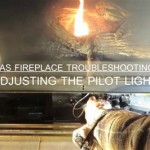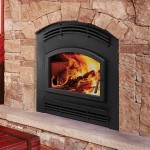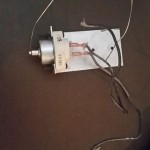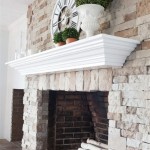Venting Gas Fireplaces: A Comprehensive Overview
Venting gas fireplaces offer a blend of aesthetic appeal and functional heating, providing supplemental warmth and ambiance to a living space. Unlike ventless gas fireplaces, venting models require a chimney or vent system to expel combustion byproducts, contributing to improved indoor air quality. This article provides a detailed examination of venting gas fireplaces, covering their types, operational principles, installation considerations, maintenance requirements, and associated benefits and drawbacks.
Venting gas fireplaces have evolved significantly, incorporating advanced technologies to enhance efficiency, safety, and user experience. Understanding the nuances of these systems is crucial for homeowners considering this heating option. Selecting the appropriate type, ensuring proper installation, and adhering to regular maintenance schedules are all essential for optimal performance and longevity.
Types of Venting Gas Fireplaces
Venting gas fireplaces are broadly categorized into two main types: direct vent and B-vent. Each type utilizes a distinct venting system and presents unique characteristics regarding installation flexibility and performance.
Direct Vent Fireplaces:
Direct vent fireplaces are sealed combustion systems that draw air from outside the dwelling for combustion and expel exhaust gases directly outside through a dedicated vent pipe. This vent pipe typically consists of two concentric tubes: one for intake air and the other for exhaust. This design eliminates the need for a traditional chimney and allows for greater installation flexibility, as the vent can be run horizontally through a wall or vertically through the roof. The sealed combustion chamber minimizes the risk of indoor air pollution by preventing combustion byproducts from entering the living space.Because they draw combustion air from outside and exhaust directly outside, direct vent fireplaces boast higher energy efficiency ratings compared to B-vent models. The sealed system also mitigates drafts and heat loss, further contributing to improved overall heating performance. Direct vent fireplaces are available in a wide variety of styles and sizes, accommodating diverse aesthetic preferences and heating needs.
B-Vent Fireplaces:
B-vent fireplaces, also known as natural vent or conventional vent fireplaces, rely on a naturally drafting vent system to expel exhaust gases. These fireplaces require a B-vent chimney, a double-walled metal vent pipe designed for use with gas appliances. The chimney creates a natural draft that pulls combustion byproducts upwards and out of the dwelling. B-vent fireplaces draw combustion air from within the room, which can potentially impact indoor air quality if the fireplace is not properly maintained or if the room is not adequately ventilated.B-vent fireplaces typically have lower energy efficiency ratings than direct vent models due to the open combustion system and the potential for heat loss through the chimney. They also require a vertical chimney run, limiting installation options compared to direct vent fireplaces. B-vent fireplaces are generally less expensive than direct vent models, making them an attractive option for homeowners seeking a more budget-friendly venting gas fireplace solution.
The choice between direct vent and B-vent fireplaces hinges on factors such as budget, installation constraints, energy efficiency priorities, and aesthetic preferences. Consulting with a qualified HVAC professional is recommended to determine the most appropriate option for a specific application.
Installation Considerations for Venting Gas Fireplaces
Correct installation is paramount for the safe and efficient operation of a venting gas fireplace. Improper installation can lead to a variety of problems, including gas leaks, carbon monoxide emissions, and reduced heating performance. Installation should always be performed by a licensed and qualified HVAC technician who possesses the necessary expertise and experience.
Venting System Installation:
The venting system must be installed according to the manufacturer's specifications and local building codes. Direct vent systems require careful attention to vent termination clearances, ensuring that the vent outlet is located away from windows, doors, and other air intakes. B-vent systems require a properly sized and installed B-vent chimney that extends above the roofline according to code requirements. The chimney must be free from obstructions and properly sealed to prevent leaks.Gas Line Connection:
The gas line connection to the fireplace must be made by a qualified gas fitter, adhering to all applicable safety regulations. The gas line must be properly sized to provide adequate gas pressure to the fireplace. Leak testing is essential to ensure that there are no gas leaks in the connection. A shut-off valve should be installed near the fireplace to allow for easy gas supply interruption in case of emergency or maintenance.Clearances to Combustibles:
Proper clearances to combustible materials must be maintained around the fireplace and venting system. Combustible materials such as wood framing, drywall, and furniture must be kept at a safe distance from the fireplace to prevent fire hazards. The manufacturer's installation instructions specify the minimum clearances required for each particular model.Electrical Connection:
Some venting gas fireplaces require an electrical connection for features such as ignition systems, blowers, and remote controls. The electrical connection must be made by a qualified electrician, complying with all applicable electrical codes. Proper grounding is essential to prevent electrical shocks.Thorough planning and adherence to established installation guidelines are crucial for ensuring the safe and efficient operation of a venting gas fireplace. Neglecting installation requirements can compromise safety and lead to costly repairs.
Maintenance and Safety of Venting Gas Fireplaces
Regular maintenance is essential for maintaining the optimal performance, safety, and longevity of a venting gas fireplace. Neglecting maintenance can lead to reduced efficiency, increased risk of malfunctions, and potential safety hazards.
Annual Inspection:
A qualified HVAC technician should inspect the fireplace annually. The inspection should include a thorough examination of the venting system, gas line connections, burner assembly, and control system. The technician will identify any potential problems and recommend necessary repairs or adjustments.Venting System Cleaning:
The venting system should be cleaned periodically to remove any accumulated debris that could obstruct airflow and reduce efficiency. Soot, creosote, and other deposits can build up in the vent pipe over time, posing a fire hazard. The frequency of cleaning depends on factors such as the type of fuel used, the frequency of fireplace use, and the design of the venting system.Burner Cleaning:
The burner assembly should be cleaned regularly to ensure proper ignition and combustion. Dust, lint, and other debris can accumulate on the burner, interfering with the gas flow and causing incomplete combustion. A soft brush or vacuum cleaner can be used to remove debris from the burner surface.Pilot Light Maintenance:
The pilot light should be checked periodically to ensure that it is burning properly. A weak or flickering pilot light can indicate a problem with the gas supply or the burner assembly. The pilot light can be cleaned with a small brush or needle to remove any obstructions.Carbon Monoxide Detection:
A carbon monoxide detector should be installed near the fireplace to alert occupants to the presence of dangerous levels of carbon monoxide. Carbon monoxide is a colorless, odorless gas that is produced by incomplete combustion. Exposure to carbon monoxide can be fatal. Replace the batteries in the carbon monoxide detector regularly and test the detector periodically to ensure that it is functioning properly.Professional Servicing:
Any repairs or adjustments to the gas line, venting system, or control system should be performed by a qualified HVAC technician. Attempting to repair or modify these components without proper training and experience can be dangerous and can void the warranty.By adhering to a regular maintenance schedule and prioritizing safety, homeowners can enjoy the benefits of a venting gas fireplace for many years to come. Prevention is key to minimizing the risk of problems and ensuring the continued safe and efficient operation of the appliance.
Venting gas fireplaces offer a compelling combination of aesthetics, functionality, and convenience, making them a popular choice for supplemental heating and ambiance. Understanding the different types of venting systems, adhering to proper installation guidelines, and implementing a regular maintenance schedule are crucial for maximizing the benefits and minimizing the risks associated with these appliances. Consulting with qualified professionals is recommended to ensure that the selection, installation, and maintenance of a venting gas fireplace are performed correctly, contributing to a safe and enjoyable heating experience.
Gas Fireplace Venting Explained Heat Glo
Gas Fireplace Venting Explained Heat Glo

What Are The Best Ways To Vent A Gas Fireplace Zoroast

Direct Vent Vs Natural Www Mygasfireplacerepair Com

Fireplace Cover To Keep Cold Air Out
.aspx?strip=all)
Benefits Of Direct Vent Fireplaces Regency Fireplace S

What Are The Best Ways To Vent A Gas Fireplace Zoroast

Vented Vs B Vent Direct Free Dixie S

Direct Vent B Gas Free S Mazzeo Stoves Fireplaces

Icc Direct Vent Gas Venting Insulated Wall Thimble








